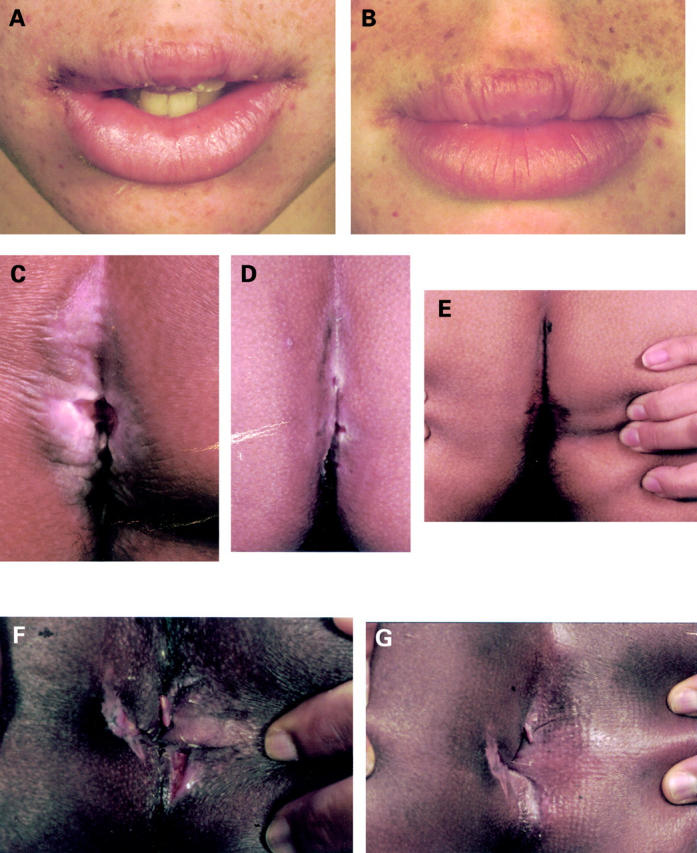Abstract
BACKGROUND—Crohn's disease of the mouth or perineum is more common in young people, and notably resistant to treatment. However, there is increasing evidence that topical therapy with tacrolimus (FK506) may be effective in skin diseases resistant to cyclosporin because of its high uptake in inflamed skin and subsequent reduction in keratinocyte chemokine production. PATIENTS AND METHODS—Tacrolimus ointment was made up inhouse from the intravenous or oral formulation and suspended in appropriate vehicles for perioral or perianal administration at an initial concentration of 0.5 mg/g. This was administered open label to eight children (aged 5-18 years) with treatment resistant oral (three patients) and/or ulcerating perineal (six patients) Crohn's disease. RESULTS—Marked improvement was seen in 7/8 patients within six weeks and healing within 1-6 months. One child with gross perineal and colonic disease showed little response. Two of the responders showed rebound worsening when tacrolimus was stopped or the dosage reduced rapidly, and one of these eventually required proctectomy. Slower weaning of drug concentration has been successful in 6/8 patients, with four receiving intermittent treatment and two on regular reduced dosage (0.1-0.3 mg/g) with follow up times of six months to 3.5 years. Serum concentrations of tacrolimus were undetectable in all patients. CONCLUSIONS—Topical tacrolimus at low concentrations (0.5 mg/g) shows promise in the management of childhood perineal and oral Crohn's disease, with no evidence of significant systemic absorption. However, rapid weaning or abrupt cessation of therapy may cause rebound worsening of disease. Further controlled studies are required to assess the efficacy and safety of this treatment. Keywords: Crohn's disease; tacrolimus; children
Full Text
The Full Text of this article is available as a PDF (145.4 KB).
Figure 1 .

Clinical response to topical tacrolimus therapy in three children with oral or perianal disease. Case No 3 is shown in (A) and (B); case No 1 in (C-E); and case No 7 in (F) and (G). (A) Gross lip swelling with angular cheilitis which had not responded to steroids or nutritional exclusions in a five year old boy (case No 3). (B) Marked resolution of lip swelling after four weeks of topical tacrolimus therapy. He has subsequently shown a similar response to perianal disease. (C) Severe perianal ulceration in a girl with Crohn's disease (case No 1). The ulceration was deep, with a 2-3 cm cavity, which is not apparent on the photograph. (D) Marked healing of the lesion periphery in the same case after several months but with two areas of breakdown that occurred after a reduction in dosage (she had previously healed completely but had not been photographed). (E) Eventual complete healing which has been maintained on a programme of very slow reduction in tacrolimus concentration. (F) Marked perianal ulceration with open fistula track in a nine year old boy (case No 7). This had persisted despite successful treatment of his intra-abdominal disease. (G) Follow up appearances after four weeks of topical tacrolimus with marked improvement and healing of his fistula track.


